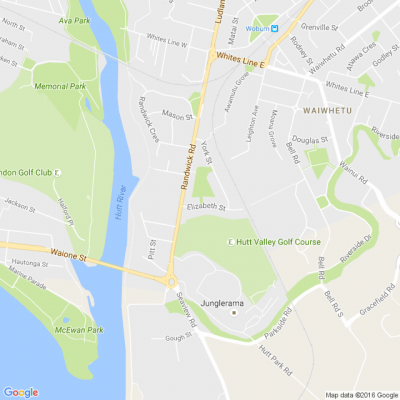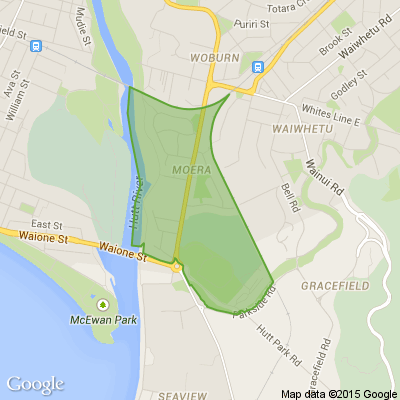
Know what’s happening
Access the private noticeboard for verified neighbours near you. Keep informed about any suspicious activity, send urgent updates to your neighbours when required and discuss emergency planning.
Get to know your neighbours
Browse the directory and start getting to know your neighbours. Don’t want to post to the whole neighbourhood? Send a private message.
Buy, sell and give away
Want to declutter your garage? Buy some used household items? Give away some garden stuff? Become a verified neighbour to browse and post items for sale. Trading is simple when everyone lives nearby.


Nearby
Woburn, Alicetown, Epuni, Hutt Central, Maungaraki, Waterloo, Waiwhetu, Fairfield, East Harbour, PetoneDoes your organisation need new flooring?
Apply for up to $2,000 and also be in to win a $20,000 makeover.

Thank you for using Neighbourly
You may receive an email confirmation for any offer you selected. The associated companies will contact you directly to activate your requests.
Alfred Memelink Artspace Gallery
Alan Benge's cartoons are great BUT did you know that Alan is also a wonderful artist, check out these local paintings, they can be viewed at Artspace Gallery on the Petone Foreshore. Well done Alan, we're looking forward to see more. Also, if you haven't got a copy of his cartoon… View moreAlan Benge's cartoons are great BUT did you know that Alan is also a wonderful artist, check out these local paintings, they can be viewed at Artspace Gallery on the Petone Foreshore. Well done Alan, we're looking forward to see more. Also, if you haven't got a copy of his cartoon book and would like a healthy laugh, come and check out if you of your neighbourhood is featured in it. I get a good laugh each time I see his cartoon of our gallery and see the elderly lady heading back to Bob Scott with her shopping trolley full of paintings. :)
Matt Tso Reporter from Community News
Righto team, where are we this week?
Let us know where you think this scene is. These days the tram tracks are gone, but it doesn't look too different.
As with last week's Way Back Wednesday, today's photograph comes courtesy of Graham Stewart and the Woolf Collection.

119 replies (Members only)
Reporter Community News
Western Suburbs midfielder Marko Stamenic has joined Danish Superliga side FC Copenhagen.
Stamenic is one of New Zealand's most exciting young players. He was set to earn a call-up to Danny Hay’s All Whites squad for the March friendlies against Bahrain and Oman, only for the games to be … View moreWestern Suburbs midfielder Marko Stamenic has joined Danish Superliga side FC Copenhagen.
Stamenic is one of New Zealand's most exciting young players. He was set to earn a call-up to Danny Hay’s All Whites squad for the March friendlies against Bahrain and Oman, only for the games to be cancelled.
The Ole Football Academy product will be playing for FC Copenhagen’s under-19 team.

Reporter Community News
Wellington Police are urgently seeking sightings of Izeah Hall-Taputu, who has been missing since Wednesday morning.
Hall-Taputu, 20, has been reported missing from his home in Cannons Creek, and police have significant concerns for his welfare.
If you have seen him today, or you have information… View moreWellington Police are urgently seeking sightings of Izeah Hall-Taputu, who has been missing since Wednesday morning.
Hall-Taputu, 20, has been reported missing from his home in Cannons Creek, and police have significant concerns for his welfare.
If you have seen him today, or you have information which might help find him, please call 111 immediately, quoting event number P043519039.

Caught locally in the sparkling waters that surround New Zealand, our Hoki is renowned for its succulent texture, white flesh and great taste.
We use the best ingredients to make all our Macca's® meals. Whether you’re in Whangarei or Queenstown, you’ll always get the great quality and … View moreCaught locally in the sparkling waters that surround New Zealand, our Hoki is renowned for its succulent texture, white flesh and great taste.
We use the best ingredients to make all our Macca's® meals. Whether you’re in Whangarei or Queenstown, you’ll always get the great quality and taste.
Find out more

Robert Anderson from
Natural, plant-based textile fibres come from seed hair, such as cotton; from foliage, such as sisal; from the stem, such as linen; and some fibres come from shells, such as coconut.
Among the most widely used in the textile industry, important and recognized, we can list the following fibres:
… View moreNatural, plant-based textile fibres come from seed hair, such as cotton; from foliage, such as sisal; from the stem, such as linen; and some fibres come from shells, such as coconut.
Among the most widely used in the textile industry, important and recognized, we can list the following fibres:
Abaca: Also known as Manila Hemp, abaca comes from leave sheaths around the stem of the plant of abaca, a species of banana. It is a leave fibre valued for its resistance to the damaging effects of salt water, its buoyancy and the length of the fibres, which can be more than 3 meters long. Currently, it is being increasingly used in the manufacturing of garments, household textiles and upholstery thanks to innovations in the process of this fibre. It is certainly still being used to manufacture sailing accessories, in the currency paper industry and automotive sector, and even in the food industry.
Cotton: Cotton grows in balls around the plant seeds and it is pure cellulose. Cotton is the natural textile fibre most widely used around the world and it is certainly the main protagonist in the global textile industry. There are two exceptional varieties of the highest quality: Egyptian cotton and Peruvian Pima.
It is widely used in the fashion industry, both in flat fabrics and in woven clothing items and household textile products. Cotton is used in combination with other natural and synthetic fibres, such as rayon, polyester, spandex, etc. Cotton fabrics are comfortable, very soft, have good heat conduction and absorbency; these characteristics make it perfect for garments that are in close contact with the skin, both in spring-summer and fall-winter seasons. Cotton tends to shrink; it is prone to wrinkles and fading.
Organic cotton: The biggest bet of sustainability is the use of certified organic cotton. It offers an efficient and sustainable use of natural resources avoiding synthetic or chemical pesticides and genetically modified seeds.
Coir: Coir is a short, hoarse fibre extracted from coconut husk. There are two types of coir: brown fibre, which comes from mature coconuts, and thin, white fibre, which comes from green, immature coconut husks. The white variety of coir fibre is used to manufacture rope and maritime elements because they are resistant to seawater. Brown fibre is employed to produce household textile items and even for the automotive industry. Additionally, geotextiles produced with coir mesh have special characteristics such as resistance to sunlight, great water absorption and they are 100% biodegradable.
Hemp: Hemp fibre is obtained from the stem of the plant. One of the most relevant features of this plant is that it captures large quantities of carbon. With 70% of cellulose, hemp is an excellent heat conductor, it absorbs dyes adequately, it blocks UV rays, it is very resistant to mildew and has natural antibacterial properties.
Recent developments to “cottonize” hemp fibre could open the doors of high-quality fashion market to this fibre. The longest hemp fibres can be woven and knitted to create curly fabrics, similar to linen, used in the textile industry. The mixture of hemp with cotton, linen, silk, and wool give hemp greater softness, while adding strength and durability to the product.
Hemp fibres are also used to manufacture paper and a wide variety of canvasses for different uses. It is also employed in the automotive and construction industries.
Linen: Linen is one of the strongest plant-based fibres in nature; therefore, it was one of the first to be grown, woven, and knitted to manufacture clothing and accessories. There are different types of linen based on their species. The main types are common flax and perennial flax.
Linen is a fabric with high mechanical resistance and little elasticity; therefore, it wrinkles easily. Its softness increases with washes. As linen quickly absorbs and releases water, and as it is an excellent thermal conductor, the fabric is fresh, highly valued and employed in the production of clothing for warm areas. Linen garments are fresh, comfortable, and they symbolize elegance in summer fashion.
Linen maintains a strong traditional niche among high-quality textiles for household products, beddings, upholstery, and interior design accessories.
Ramie: Ramie fibre is white with gloss similar to silk, and it is one of the strongest natural fibres, close to linen in absorption and density. It has little elasticity and it dyes easily. Ramie fibres have some transverse fissures that make it very fragile, but at the same time promote ventilation. The rugged ramie fibres are used to make ropes and nets. Through threading, they produce thin, very glossy thread that is used for a wide variety of garments.
Fabrics made 100% of ramie are lightweight, silky to the touch but with a linen appearance. Normally, as its elasticity and resistance are quite low, ramie is mixed with other textile fibres or used to improve the characteristics of other textile fibres. For example, ramie is added to wool to reduce shrinking or to cotton to increase strength.
Sisal: Sisal is an excessively hard fibre and inelastic to be used in the fashion industry. It is employed in small proportions and in combination with other fibres for the manufacture of accessories and home decor items. Currently sisal is mainly used in the furniture, automotive and naval industries, always combined with other materials.
Jute: Jute is extracted from the stem of a plant with the same name and it is very easy to grow and harvest. Jute is one of the cheapest fibres to produce. This fibre is also known as “golden fibre” because of its glow. Jute is one of the strongest, plant-based natural fibres, and it is second to cotton in terms of production volume. Jute presents poor absorption, so it deteriorates quickly when exposed to humidity; it has low thermal conduction, but it contains significant insulating and anti-static properties. Jute is used as supplementary material in textile and footwear manufacturing, as well as in household textiles.
Kapoc: It is a white fibre similar to hair that comes from the seeds of a tree called Ceiba Pentandra. Kapok is also known as “silk cotton” because of its gloss that resembles silk. Kapok’s fibre, weak and short, is resistant to moisture and it has a soft, lustrous texture. The largest volume of its production is used for household textiles.
Ramina: Ramina is a ligneous fibre also known as China grass. It is rigid, shiny, and lustrous. Ramina is used for household textiles.
Kylie Klein Nixon Reporter from Homed
Hi everyone! I'm Kylie, a Homed reporter. We're looking for people who have fairly recent, interesting, unique or off-the-wall stories to tell about how they bought their first homes. Did you move away from your home just to find a more affordable property? Did you scrimp and save for … View moreHi everyone! I'm Kylie, a Homed reporter. We're looking for people who have fairly recent, interesting, unique or off-the-wall stories to tell about how they bought their first homes. Did you move away from your home just to find a more affordable property? Did you scrimp and save for years to get a deposit together? Perhaps your family chipped in to help get you on the ladder? Are you older and buying for the first time? Did you choose to move into a home with a friend or another couple to make it more affordable? Please let us know in the comments below, or drop me a line in the messages. Your comments my be used in a story, but we'd also be interested in chatting to you for an exciting project coming up!

32 replies (Members only)
Gemma Elizabeth from Hutt Valley District Health Board
Hutt Valley DHB is aware that some primary care nurses will be undertaking strike action for eight hours tomorrow (Thursday 3 September).
DHB nurses are not involved in the strike action.
Community-based assessment centres (CBACs) are not included in the strike and will operate as normal. GPs and… View moreHutt Valley DHB is aware that some primary care nurses will be undertaking strike action for eight hours tomorrow (Thursday 3 September).
DHB nurses are not involved in the strike action.
Community-based assessment centres (CBACs) are not included in the strike and will operate as normal. GPs and after-hours centres are also expected to be operating as normal. People who are unwell should continue to contact their GP or Healthline as usual.
Anyone in need of care of urgent care should go to the emergency department. In an emergency, call 111.

Reporter Community News
Hollywood heavyweights Kirsten Dunst and Jesse Plemons applied for an exemption to avoid having to quarantine in an Auckland hotel
Their application came at a time when virtually all foreigners were banned due to Covid-19 border restrictions. The pair applied to spend their time in a … View moreHollywood heavyweights Kirsten Dunst and Jesse Plemons applied for an exemption to avoid having to quarantine in an Auckland hotel
Their application came at a time when virtually all foreigners were banned due to Covid-19 border restrictions. The pair applied to spend their time in a secluded Waikato property.
Although the Ministry of Business, Innovation and Employment (MBIE) refused to confirm whether an exemption was granted, the pair have told Vanity Fair they are staying in a hotel.
Their application for an exemption cited concerns over privacy and a concern they would be followed by photographers.

27 replies (Members only)
Gemma Elizabeth from Hutt Valley District Health Board
Here is the latest information about the number of people tested for COVID-19 in our region. We will publish these figures every weekday to give you a clearer picture of what is happening in our area.
There is no known community transmission in the Wellington and Hutt Valley regions.
These … View moreHere is the latest information about the number of people tested for COVID-19 in our region. We will publish these figures every weekday to give you a clearer picture of what is happening in our area.
There is no known community transmission in the Wellington and Hutt Valley regions.
These figures will also be published on our website and updated each weekday. View figures here: www.huttvalleydhb.org.nz...

Mike Barton from
6 Britannia Street, Petone. Open 9.30am until 2pm Monday to Friday.
The Team from ACC New Zealand
Maintaining your balance is key to enjoying life and avoiding falls. With the easy-to-use app called Nymbl, you can improve your balance and live falls free. You just need a smartphone or tablet.
With Nymbl you’ll use simple and safe body movements and easy brain challenges like trivia. … View moreMaintaining your balance is key to enjoying life and avoiding falls. With the easy-to-use app called Nymbl, you can improve your balance and live falls free. You just need a smartphone or tablet.
With Nymbl you’ll use simple and safe body movements and easy brain challenges like trivia. It’s a technique called dual-tasking and it’s proven to be effective, it’s also fun. Just 10 minutes a day in the comfort of your own home and you can be Nymbl.
Register now to get Nymbl free. Nymbl is brought to you by Live Stronger For Longer and ACC, MOH and HQSC.
Learn more

The Team from Neighbourhood Support New Zealand
1 in 4 New Zealand adults will suffer from a mental disorder or distress at some point in their lives. When they do, let’s make sure they don’t have to go it alone. To create safer, more caring communities we need to not only look after ourselves but those around us as well.
For the month of … View more1 in 4 New Zealand adults will suffer from a mental disorder or distress at some point in their lives. When they do, let’s make sure they don’t have to go it alone. To create safer, more caring communities we need to not only look after ourselves but those around us as well.
For the month of September, we want to use our voice to raise awareness for mental health and well-being. Perhaps consider sharing a cuppa with someone you know who could use the support or challenge your family and friends to unplug from social media for the entire month to improve their well-being. If you or someone you know is going through a rough patch, don’t forget you can call or text 1737 anytime for FREE support from a trained counsellor.
This month also coincides with World Suicide Prevention Day (September 10th) followed by Mental Health Awareness Week (21 - 27 September).
However you choose to take part, make sure to tag us in your posts + use the following hashtag so we can see how you’re cultivating better mental health for yourself or in your community this month:
#NSNZmentalhealth

Gemma Elizabeth from Hutt Valley District Health Board
Here is the latest information about the number of people tested for COVID-19 in our region. We will publish these figures every weekday to give you a clearer picture of what is happening in our area.
There is no known community transmission in the Wellington and Hutt Valley regions.
These … View moreHere is the latest information about the number of people tested for COVID-19 in our region. We will publish these figures every weekday to give you a clearer picture of what is happening in our area.
There is no known community transmission in the Wellington and Hutt Valley regions.
These figures will also be published on our website and updated each weekday. View figures here: www.huttvalleydhb.org.nz...

 Loading…
Loading…
Are you sure? Deleting this message permanently removes it from the Neighbourly website.
 Loading…
Loading…

 Auction
Auction



 Marketed by Ben Atwill
Marketed by Ben Atwill

 Auction
Auction



 Marketed by Ben Atwill
Marketed by Ben Atwill





 Marketed by John Donnelly
Marketed by John Donnelly

 Deadline Sale
Deadline Sale


 Marketed by Rochelle Forbes
Marketed by Rochelle Forbes
© Neighbourly 2024
